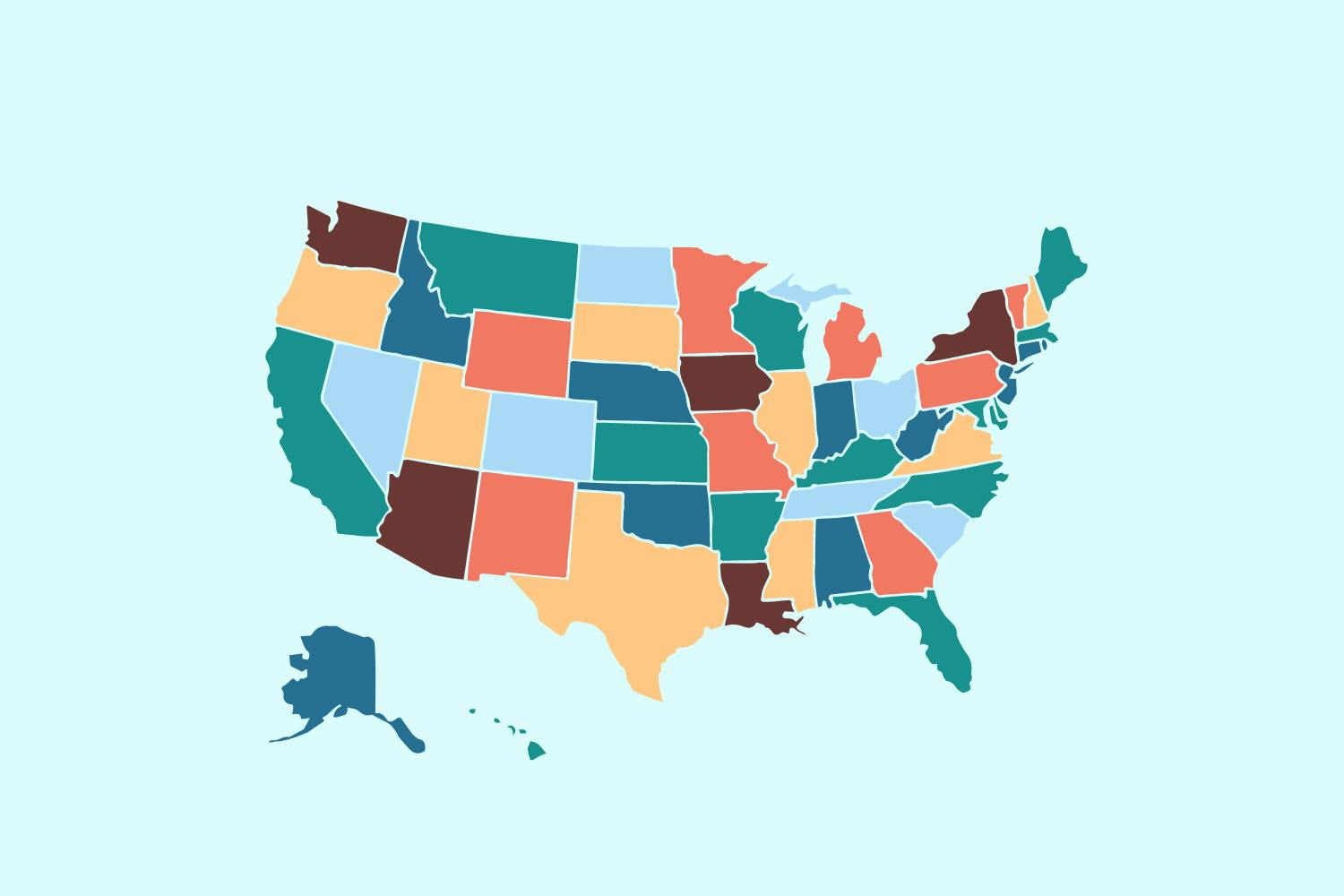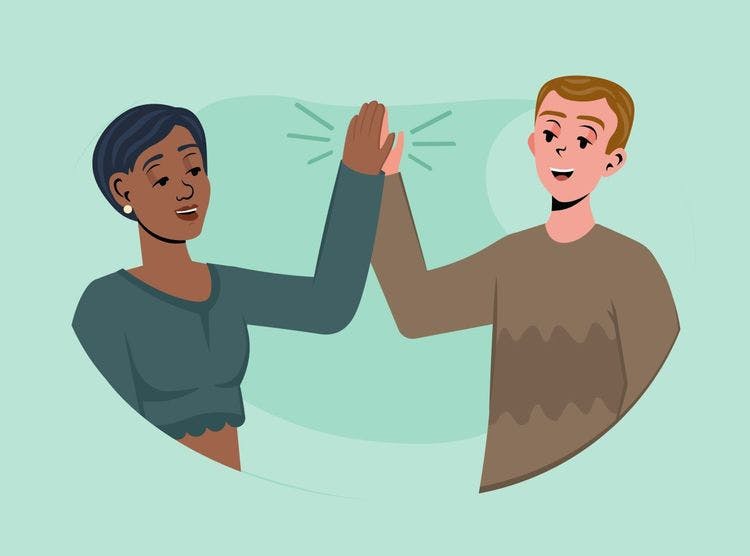The Sound of the Midwest: A Linguistic Journey Through America’s Breadbasket


You will get a promo code with a discount for our app courses after reading this article.
Contents
While many language learners can easily determine the difference between British and American accents, this topic still has much to discover. There are over a dozen dialects in the United States only. And one of the most prominent and recognizable ones is the Midwestern accent. Today’s article will explore its roots, origins, geographical nuances, and typical linguistic features. So, buckle up, and let’s dive right into it!
The Geography and Evolution of Midwestern Dialect
The Midwest, also called the “Heartland” and “America’s breadbasket,” is the region in the northern central part of the United States, laying midway between the Appalachian and Rocky Mountains. It includes Indiana, Iowa, Kansas, Minnesota, Nebraska, Ohio, Wisconsin, and several other states. The fertile soil in the Midwest has made it an agricultural hub, contributing to the development of rural communities.
The dialect spoken in the Midwest is generally considered a part of the broader American English, but with certain distinctive features that set it apart from other regional dialects. Different historical events influenced the appearance of such an accent. Let’s explore the origins of the Midwest dialect.
- Native American tribes initially settled in the Midwest, but European colonization and westward expansion brought diverse linguistic influences. French explorers and traders were among the earliest Europeans in the region, leaving a lasting impact on the local toponyms and vocabulary. German and Scandinavian immigrants also played a crucial role in shaping the dialect, especially in states like Wisconsin and Minnesota.
- The early 20th century saw the Great Migration. African Americans moved from the Southern United States to urban centers in the Midwest, such as Chicago and Detroit, searching for better economic opportunities. This migration contributed to the region’s linguistic diversity, as African American Vernacular English (AAVE) influenced the local speech patterns.
The Midwestern dialect is considered a neutral or standard American English accent, lacking distinctive features prominent in different regional pronunciations. However, many unique characteristics still distinguish it from other dialects.
Deep Dive: What Does a Midwestern Accent Sound Like
Have you ever heard a person saying “pop” instead of “soda” or “ope” instead of “sorry”? If so, congratulations! You’ve probably met someone from the Midwest. These are only a few examples of unique words and phrases characteristic of this region. But, of course, we won’t stop there. Below, you’ll find more details about the features of the Midwest accent.
Pronunciation
One of the first things that distinguishes Midwestern from British, Irish, or American accents is the way of pronouncing the sounds and words. While most are similar to GenAm, there are some unique features. Here are the examples.
- Cot-caught merger.
One prominent feature of the Midwestern accent is the cot-caught merger. In many Midwestern speakers, the vowels in words like “cot” and “caught” are pronounced the same way, resulting in a merger of these vowel sounds. You can also hear it in the words “stock” and “stalk,” “nod” and “gnawed,” etc.
- Extra “R.”
The Midwestern American accent is generally rhotic, meaning speakers pronounce the “r” sound at the end of words and before consonants. In layman’s terms, it means that you’ll not only hear it more clearly in the words like “water.” This sound appears in places where it’s not supposed to be, like after the “a” in the word “wash,” transforming it into a “warsh.”
- Extra “S.”
Another exciting feature of the Midwestern accent examples is an extra “s” sound added to the word “all.” There is no particular reason for this, but you’ll often hear something like “Alls I want to say is…” from someone speaking the Midwestern dialect.
3
Slang Terms and Expressions
In addition to unique Midwestern pronunciations, numerous unique words and expressions can be heard in this area. British, Irish, and Australian slang are full of interesting phrases, and so is Midwestern American. And sure thing, we can’t miss the chance to share them with you. Here are some slang terms of the Midwest and how they use them in casual conversations.
- Pop.
This word is especially common in Midwestern regions as an umbrella term for different soft drinks. For example:
What kind of pop is that? I’ve never tasted that one before.
Can you pass me a can of pop, please?
- Bubbler.
This word is very exciting, as it always makes us giggle. The meaning is simple – “bubbler” is what in other parts of the country called “water fountain” or “drinking fountain.” For example:
Do you have an empty bottle? I want to get some water from this bubbler.
Are there any bubblers around? I haven’t seen one for a while.
- Jeet?
Alright, this one might be a bit surprising because it’s not a word but a complete sentence. When you unscramble it, it will become the thoughtful question, “Did you eat?” For example:
Good morning! Jeet breakfast?
Jeet a lot of candy?
- Puppy Chow.
While this is not slang, this expression is typically widespread in the Midwest. It describes a delicious sweet snack made of Chex cereal, peanut butter, chocolate, and other delicious things. And yes, it has nothing to do with puppies! For example:
Last night, I enjoyed a cozy movie night with friends, munching on a bowl of sweet and crunchy puppy chow.
I’m not ashamed to admit that puppy chow is my favorite snack.
- Stop-n-go lights.
This expression is usually used in Wisconsin but can often be heard in other parts of the region. And it means exactly what you think – another name for traffic lights. For example:
The stop-n-go lights at busy crossroads help regulate the traffic flow.
The stop-n-go lights blinked from red to green.
- Ope.
This is a universal Midwestern word that can be used as “sorry,” “excuse me,” or “pardon me.” In some cases, it can showcase the element of surprise as the synonym for “oops.” For example:
X: Hey! Look where you go!
Y: Ope! I haven’t noticed you.
- Uffda.
Another expression that can mean a ton of different things, from “oops” to “ouch” to “oh no” to “okay.” There are also many variations of spelling it – uff-da, oofda, oofta, etc. For example:
Uffda! I’m so tired; it was a tough week.
Uffda! What are you doing here all dolled up?
- Schnookered.
When someone from the Midwest had several drinks last night, they might say they were “wasted,” “slammed,” or more local equivalent – schnookered. For example:
A: Have you seen Jake?
B: No. But he was so schnookered yesterday that he is probably still sleeping.
- Dontcha know?
The last expression in this list of Midwestern slang is a widespread, shortened form of a common question: “Don’t you know?” However, it is typically used as a statement. For example:
I’m going on a date tomorrow, dontcha know?
He is so handsome, dontcha know?
So, Midwestern slang is another vocabulary category in addition to Internet slang, dating slang, 90s slang, and so on. Traveling across the USA, you better know the Midwestern slang to easier understand locals in different situations.
Master Midwestern Dialect and Beyond with Promova
Learning English, regardless of the accent, is an exciting and inspiring journey. However, it requires some effort, a lot of practice, and dedication. And, of course, having a convenient and expert resource to help you achieve your goals would be great. That is why today we want to discuss Promova – your one-stop solution for fluency. What will you get here?
- Personalized studying courses tailored specifically to your needs. Whether you’re a beginner or an advanced speaker, you will find the materials suitable for your level.
- 1x1 tutoring and group lessons. Our professional tutors are always here to help you reach your linguistic goals. Depending on your preferences, you can try personal lessons or join a group of language enthusiasts of your level.
- Conversational club. For those aiming to practice speaking and listening skills, Promova has a special offer. The free Conversation club is a great way to discuss exciting topics with other language learners, mastering your English skills simultaneously.
- Multiple languages. If you are satisfied with your current English level but still want to learn a language, we’ve got you covered. With the convenient Promova app, you can study Italian, Spanish, French, Korean, and multiple other tongues. The application is available for iOS and Android devices, making it easy to start practicing immediately.
Promova is a global language-learning platform that makes studying extremely enjoyable. All you need to do is pass a quick test to determine your fluency level, provide information about your learning goals, and receive a personalized course based on this data. If you are hesitating, Promova offers a free trial lesson so you can try the waters before making your final decision.
Conclusion
Overall, the Midwest is an outstanding region known for its industry, farming, and incredibly friendly people. The Midwestern accent is as diverse as the area, containing numerous dialects and variations. However, it doesn’t make it any less beautiful or exciting – instead, it adds local flavor. We hope today’s article will help you learn more about this beautiful accent and memorize some of the most popular terms from the area.
Use your discount and learn languages with Promova
Start learningFAQ
Can learning a Midwestern accent make me sound more fluent?
Since the Midwestern accent sounds similar to General American, it might help you understand some nuances of pronunciation, which will be useful for reaching fluency. However, stating that it will provide immediate proficiency in the language can’t be entirely true. Your fluency level depends on various factors, including vocabulary and grammar knowledge, reading and writing skills, etc.
Are there different types of Midwestern accents?
The Midwest is a vast territory that includes many states. Hence, despite numerous similarities in accents, there are still some different dialects. The most well-known is the Chicago accent, which blends classic Midwestern features with influences from the larger urban dialect. Another famous accent comes from the Great Lakes; it is known for its unique vowel pronunciation.
What are some other accents of American English?
In addition to Standard American English, the most recognizable accent is probably the New York City one. It is known for its dropped “r” sounds and elongated “aw.” Also, there are a bunch of Southern accents, including Texan, Appalachian, and others. And we can’t forget about the Philadelphia accent, which is recognizable for pronouncing the r-s, shortening words, etc.
Are there any tips to master the Midwest accent?
Of course, if you want to master this accent specifically, some tips can be helpful. Try to surround yourself with native speakers from the Midwest. Listen to podcasts, watch movies or TV shows, and pay attention to how people speak. When doing it, try to mimic the speakers and repeat their phrases and sentences. Remember that practice makes perfect, so stay consistent, and you will see the results quite soon.



Comments